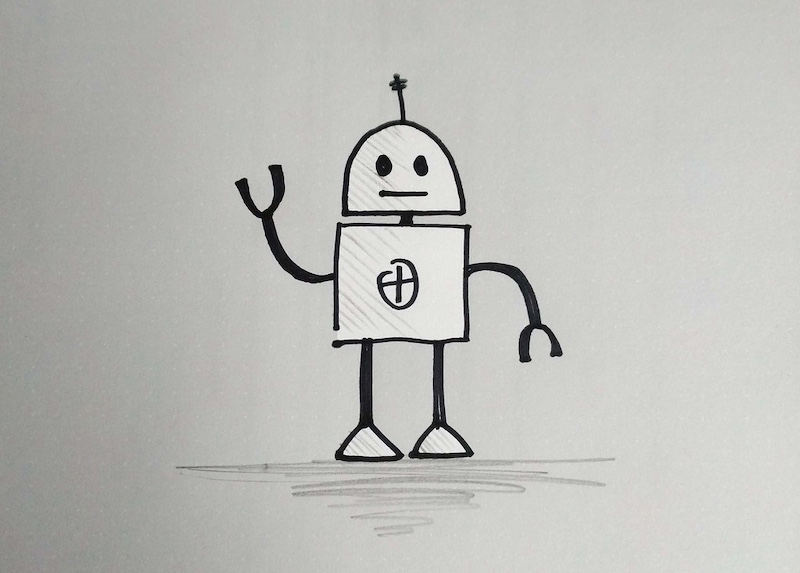
Revolutionizing Industries: AI Chatbots in Customer Service and Automated Visual Inspection in Manufacturing
Artificial intelligence (AI) has made significant strides in transforming various industries, particularly customer service and manufacturing.
AI chatbot Development have become crucial in enhancing customer service experiences, while automated visual inspection systems have revolutionized quality control in packaging and manufacturing.
By leveraging AI, businesses can improve operational efficiency, ensure high-quality standards, and reduce costs, leading to a new era of technological innovation and competitive advantage.
AI Chatbots: Redefining Customer Service
AI chatbots have emerged as a powerful tool in reshaping customer service, offering significant improvements in both quality and cost-effectiveness. These chatbots, powered by natural language processing (NLP) and machine learning, are designed to interact with customers seamlessly, providing a range of benefits.
Enhancing Customer Interactions
- Instantaneous Responses: AI chatbots provide immediate responses to customer inquiries, eliminating wait times and improving the overall customer experience. This capability is particularly valuable in an era where consumers expect quick and efficient service.
- Consistency and Reliability: Unlike human agents, who may vary in their responses, AI chatbots deliver consistent and reliable information. This uniformity helps build trust and ensures that all customers receive accurate assistance.
- Personalized Engagement: Modern AI chatbots can analyze customer data to offer personalized recommendations and responses. By tailoring interactions to individual preferences and histories, chatbots create a more engaging and satisfying customer experience.
- Handling High Volumes: AI chatbots can manage multiple conversations simultaneously, making them ideal for businesses experiencing high volumes of customer inquiries. This scalability ensures that customer service remains efficient even during peak times.
- Multilingual Support: AI chatbots can communicate in various languages, enabling businesses to cater to a global customer base. This feature is essential for companies looking to expand their reach and serve diverse markets.
Reducing Operational Costs
- Lower Staffing Costs: By handling a significant portion of customer inquiries, AI chatbots reduce the need for large customer service teams. This decrease in staffing requirements leads to substantial cost savings.
- Minimal Training Requirements: Unlike human agents, who require extensive training, AI chatbots need only initial setup and periodic updates. This reduction in training costs further contributes to overall savings.
- Increased Efficiency: AI chatbots operate around the clock, providing continuous service without the need for breaks or shifts. This efficiency translates to higher productivity and lower operational costs.
- Infrastructure Savings: With AI chatbots managing a large volume of interactions, businesses can reduce their reliance on physical call centers and associated infrastructure, leading to cost reductions in real estate and utilities.
- Error Reduction: The consistency of AI chatbots minimizes errors, reducing the costs associated with rectifying mistakes and addressing customer dissatisfaction.
Automated Visual Inspection: Advancing Manufacturing Quality Control
The integration of AI-driven automated visual inspection systems has transformed quality control in packaging and manufacturing. These systems leverage advanced machine vision technology to enhance accuracy, efficiency, and productivity.
Improving Quality Assurance
- Consistent Inspection: Automated visual inspection systems provide consistent and objective evaluations, eliminating the variability and fatigue associated with human inspectors. This consistency ensures reliable defect detection and high-quality standards.
- Rapid Processing: These systems can inspect products at high speeds, far surpassing the capabilities of human inspectors. This speed is crucial for maintaining efficiency in high-volume production environments.
- Enhanced Precision: AI-driven inspection systems detect even the smallest defects, ensuring that only top-quality products reach the market. This precision helps maintain a brand’s reputation and customer satisfaction.
- Comprehensive Data Analysis: Automated systems collect and analyze vast amounts of inspection data, offering valuable insights into production processes. This data-driven approach enables continuous improvement and proactive defect prevention.
Boosting Operational Efficiency
- Reduced Downtime: Automated systems quickly identify and address defects, allowing for immediate corrective actions. This swift response minimizes downtime and keeps production lines running smoothly.
- Cost Efficiency: Early detection of defects prevents defective products from advancing through the production process, reducing costs associated with rework, scrap, and warranty claims.
- Optimized Resource Utilization: By ensuring that only high-quality components are used, automated visual inspection systems optimize the use of materials and resources, reducing waste and enhancing efficiency.
- Scalable Solutions: These systems can be scaled to accommodate growing production demands without the need for proportional increases in manual inspection resources. This scalability supports business growth and adaptability.
- Regulatory Compliance: Automated visual inspection systems provide detailed inspection records, facilitating compliance with industry regulations. This traceability is crucial for maintaining standards and meeting regulatory requirements.
Conclusion
The deployment of AI chatbots and automated visual inspection systems signifies a major leap forward in customer service and manufacturing.
AI chatbots enhance customer service by delivering instant, consistent, and personalized interactions, while reducing operational costs through increased efficiency and scalability. In manufacturing, automated visual inspection systems ensure high-quality standards, operational efficiency, and cost savings.
Together, these technologies highlight the transformative potential of AI in driving innovation, improving competitiveness, and shaping the future of industries.


